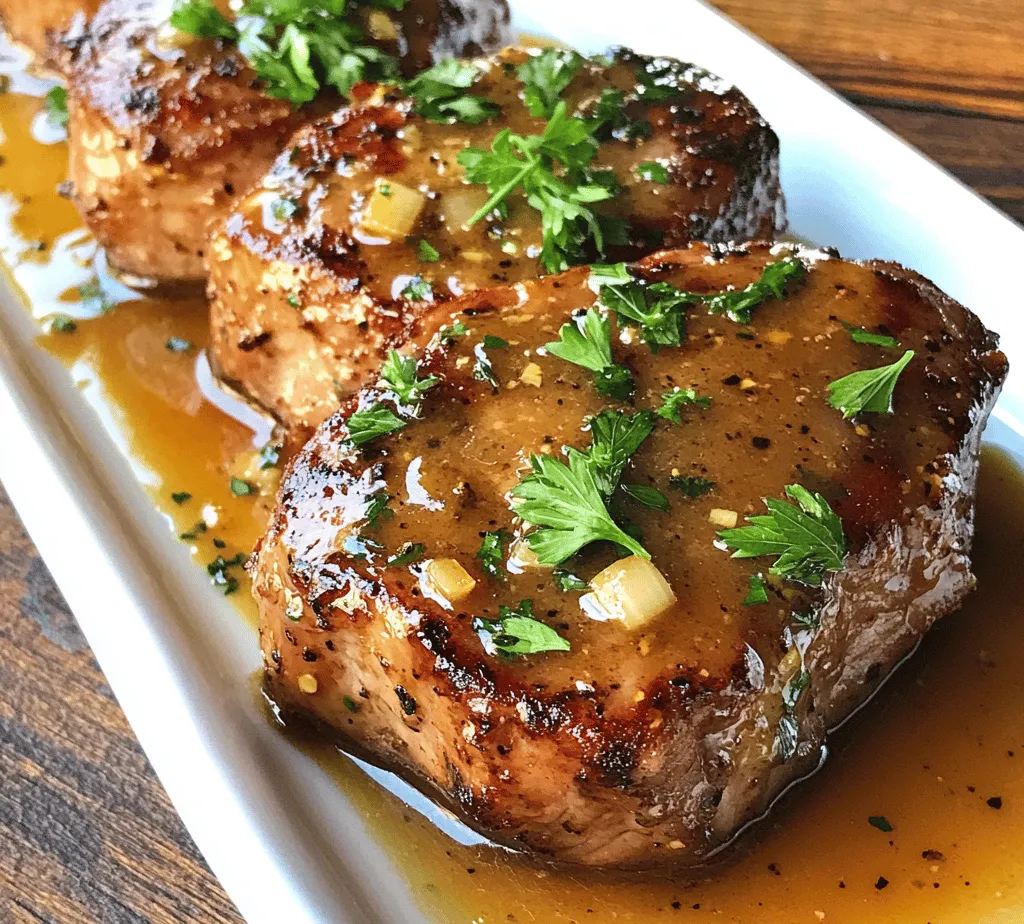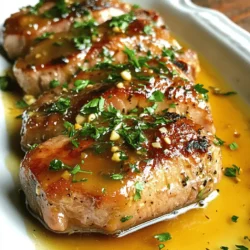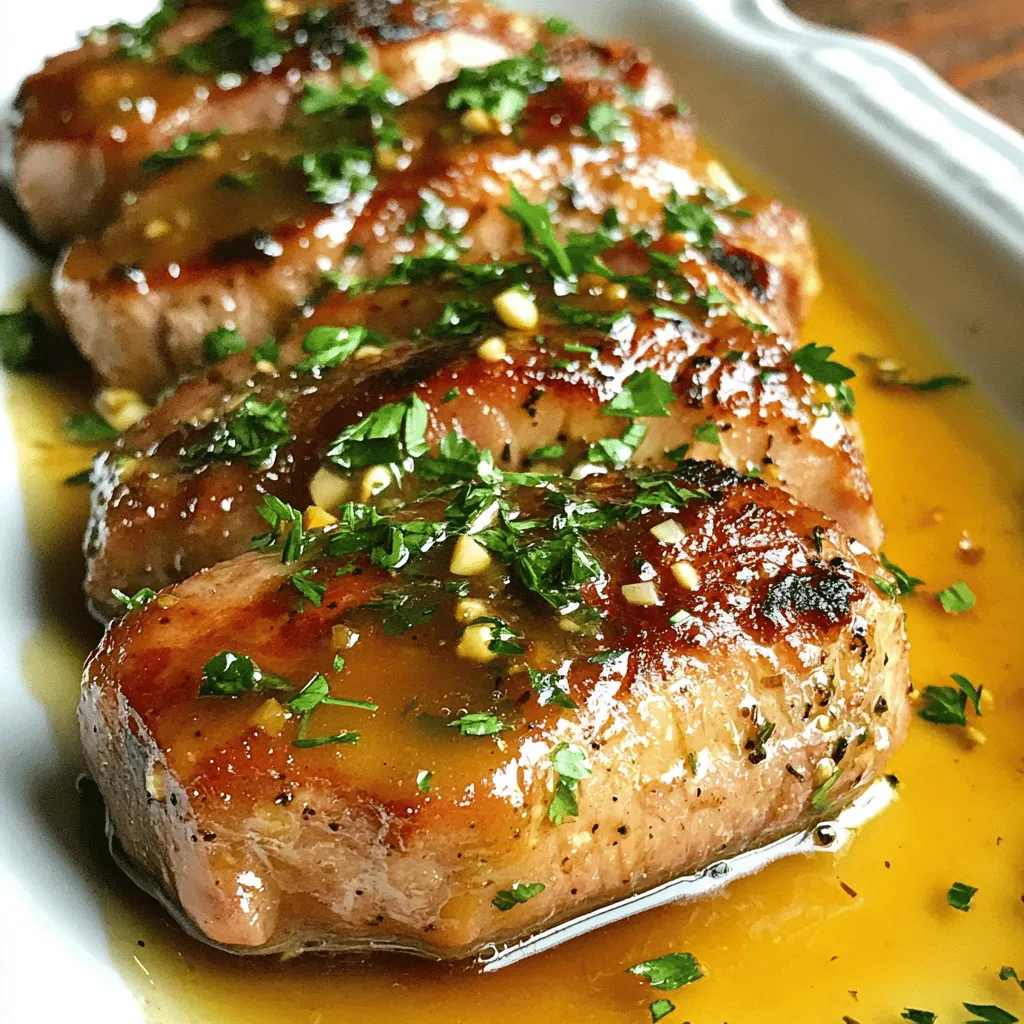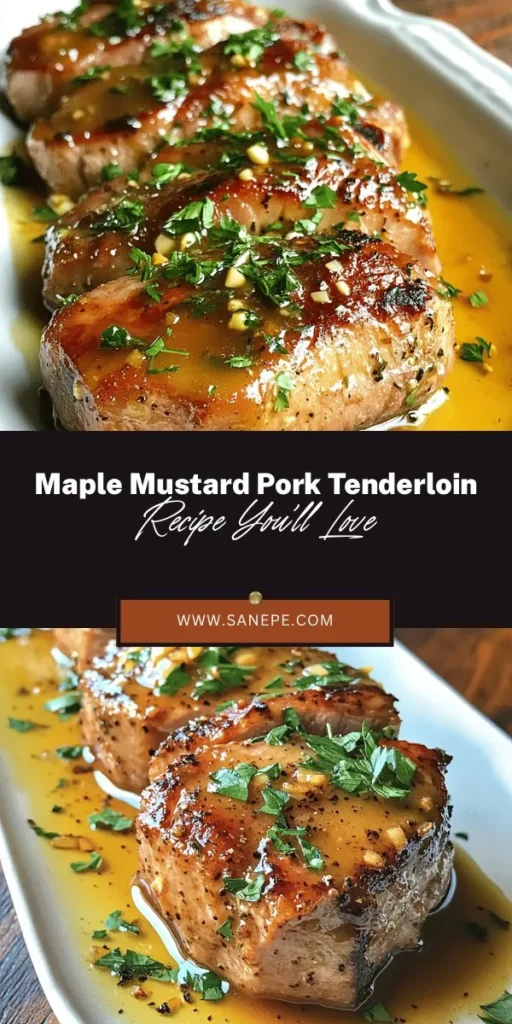Pork tenderloin is celebrated in culinary circles for its versatility and tenderness, making it a preferred choice among home cooks and professional chefs alike. This lean cut of meat is not only easy to prepare but also absorbs flavors exceptionally well, allowing for a myriad of culinary expressions. Today, we’re focusing on a delightful recipe that combines the natural sweetness of maple syrup with the tangy zest of mustard—Maple Mustard Pork Tenderloin. This dish is a harmonious blend of sweet and savory flavors that promises to tantalize your taste buds.
The Maple Mustard Pork Tenderloin is a perfect option for both weeknight dinners and special occasions. Whether you are hosting a dinner party or simply looking for a comforting meal at home, this dish fits the bill. The preparation is remarkably straightforward, making it accessible for cooks of all skill levels. It’s the kind of recipe that impresses without requiring hours in the kitchen, allowing you to enjoy more time with your family or guests.
Understanding Pork Tenderloin
Before diving into the recipe, it’s essential to understand what pork tenderloin is and why it’s such a popular choice in many kitchens. Pork tenderloin is a long, narrow cut of meat that comes from the muscle that runs along the spine of the pig. This cut is known for its mild flavor and buttery tenderness, which can be attributed to its leanness. Unlike other cuts of pork that can be tougher or fattier, tenderloin cooks quickly and remains juicy when prepared correctly.
In addition to its exquisite taste, pork tenderloin comes with numerous nutritional benefits. It is an excellent source of high-quality protein, which is essential for muscle repair and overall body function. A typical serving of pork tenderloin can provide around 22 grams of protein, along with vital nutrients such as B vitamins (including B6 and B12), zinc, and selenium. These elements support various bodily functions, including immune response and energy metabolism.
When shopping for pork tenderloin, it’s crucial to select the best quality for optimal flavor and tenderness. Look for tenderloins that are pale pink in color with a firm texture. Avoid any cuts that appear dark or discolored, as this may indicate spoilage. If possible, purchase pork that is labeled as “natural” or “humanely raised” to ensure that you are getting a high-quality product. Local farms or reputable butchers often provide the freshest options.
Ingredients Breakdown
The success of the Maple Mustard Pork Tenderloin largely depends on the quality of the ingredients used. Below is a comprehensive list of the key ingredients, along with descriptions of their roles and benefits in the recipe:
Pork Tenderloin
As the star of the dish, selecting a fresh and high-quality pork tenderloin is crucial. This cut of meat should be well-trimmed, with minimal fat. The tenderness of the pork will greatly enhance the overall dining experience.
Maple Syrup
Maple syrup serves as the main sweetener in this recipe, providing a natural sweetness that beautifully complements the savory elements. Beyond its delicious flavor, maple syrup contains antioxidants, making it a healthier alternative to refined sugars.
Dijon Mustard
Dijon mustard is a flavor powerhouse, lending a sharp and tangy note to the dish. Its acidity helps to balance the sweetness of the maple syrup, creating a harmonious flavor profile that works exceptionally well with pork.
Olive Oil
Using olive oil adds richness to the marinade and helps to keep the pork tender during cooking. Olive oil is also known for its health benefits, including heart-healthy fats and anti-inflammatory properties.
Garlic
Garlic is a classic flavor enhancer that adds depth to the marinade. It not only boosts the flavor but also offers several health benefits, such as improved immune function and cardiovascular health.
Fresh Thyme
Fresh herbs like thyme brighten the dish with their aromatic qualities. Fresh thyme is preferred over dried because it provides a more vibrant flavor and better complements the sweetness of the maple syrup.
Salt and Pepper
These essential seasonings enhance the flavors of the pork and the marinade. Proper seasoning is key to ensuring that every bite is flavorful.
Apple Cider Vinegar
Apple cider vinegar adds a tangy acidity that balances the sweetness of the maple syrup and the richness of the pork. It also helps to tenderize the meat, ensuring a juicy outcome.
Red Pepper Flakes
For those who enjoy a touch of heat, red pepper flakes can be added to the marinade. This optional ingredient introduces a subtle spiciness that contrasts beautifully with the sweetness.
Fresh Parsley
Fresh parsley is used as a garnish, bringing a pop of color to the finished dish while also adding a fresh, herbaceous flavor that brightens the palate.
Marination Process
Marinating the pork tenderloin is an essential step that enhances its flavor and tenderness. The marinade allows the meat to absorb the sweet and tangy notes from the maple syrup and mustard, resulting in a richly flavored dish.
Step-by-Step Guide to Prepare the Marinade
1. Combine Ingredients: In a medium bowl, whisk together the maple syrup, Dijon mustard, olive oil, minced garlic, fresh thyme leaves, apple cider vinegar, salt, pepper, and red pepper flakes (if using). Ensure that the mixture is well combined to create a uniform marinade.
2. Prepare the Pork: While preparing the marinade, trim any excess fat from the pork tenderloin. This step ensures that the meat cooks evenly and does not become greasy.
3. Marinate the Pork: Place the pork tenderloin in a resealable plastic bag or a shallow dish. Pour the marinade over the pork, ensuring it is well coated. Seal the bag or cover the dish with plastic wrap.
4. Refrigerate: Allow the pork to marinate in the refrigerator for at least one hour; for best results, marinate overnight. This extended time allows the flavors to penetrate the meat fully, resulting in a more flavorful dish.
Tips for Marinating
– Timing is Key: While marinating for just one hour will impart some flavor, allowing the pork to marinate overnight will create a more pronounced taste.
– Use Acid Wisely: The apple cider vinegar in the marinade not only adds flavor but also helps tenderize the meat. Be cautious with the marinating time; too long can lead to a mushy texture.
– Turn Occasionally: If marinating in a bag, turn it occasionally to ensure all sides of the pork are evenly coated in the marinade.
By following these steps and tips, you are well on your way to creating a delicious Maple Mustard Pork Tenderloin that will impress your family and friends alike. The combination of sweet maple syrup and tangy mustard creates a deliciously balanced flavor that is sure to become a favorite in your household. Stay tuned for the next part, where we will delve into the cooking process and additional tips for serving this delectable dish.

How Marination Affects the Tenderness and Flavor of the Meat
Marination plays a pivotal role in enhancing both the tenderness and flavor of pork tenderloin. The process allows acidic ingredients, such as mustard and maple syrup, to penetrate the meat, breaking down tough fibers while infusing it with a delightful blend of flavors. The longer the pork marinates, the more pronounced the taste and tenderness become. This is particularly important for lean cuts like pork tenderloin, which can dry out easily if not prepared correctly. By allowing the meat to soak in the marinade for at least 30 minutes—though overnight is ideal—you’ll ensure a succulent and flavorful dish that captivates your palate.
Preparing the Pork Tenderloin
Preheating the Oven and Preparing the Skillet
Begin by preheating your oven to 400°F (200°C). This temperature is perfect for roasting pork tenderloin, as it ensures that the outside gets a nice crust while the inside remains juicy. While the oven is heating up, choose a heavy, oven-safe skillet, such as cast iron, and place it over medium-high heat on the stovetop. This will be essential for achieving that perfect sear.
Importance of Searing the Pork
Searing is a critical step in the cooking process, as it creates a flavorful crust on the outside of the pork tenderloin through a chemical reaction known as the Maillard reaction. This reaction occurs when proteins and sugars in the meat are heated, producing complex flavors and a rich brown color. Not only does searing enhance the overall taste of the dish, but it also helps to lock in moisture, keeping the pork tender and juicy throughout the baking process.
Tips for Achieving a Perfect Sear
To achieve a perfect sear, it’s important to follow a few key tips:
– Dry the Meat: Before searing, pat the pork tenderloin dry with paper towels. Moisture on the surface can create steam and prevent browning.
– Use High Heat: Ensure your skillet is hot enough before adding the pork; a drop of water should sizzle immediately upon contact.
– Don’t Overcrowd the Pan: If you’re cooking multiple tenderloins, make sure there’s enough space for each piece to sear without touching. Overcrowding will lower the temperature and cause steaming rather than searing.
– Minimal Movement: Once you place the pork in the skillet, resist the urge to move it around too much. Let it sear undisturbed for about 3-4 minutes on each side until a golden-brown crust forms.
Baking the Pork Tenderloin
Once the pork tenderloin is beautifully seared, it’s time to transfer it to the preheated oven for baking.
Instructions on How to Bake After Searing
After searing, carefully transfer the skillet with the pork to the preheated oven. If you used a different pan to sear, you can transfer the pork to a baking dish instead. Pour any leftover marinade over the pork to enhance the flavor during baking. Bake for approximately 20-25 minutes, or until the internal temperature reaches 145°F (63°C).
Importance of Monitoring Internal Temperature for Doneness
Monitoring the internal temperature is vital for ensuring perfectly cooked pork tenderloin. Undercooking can lead to food safety issues, while overcooking can dry out the meat. The best way to check the temperature is by using a meat thermometer inserted into the thickest part of the tenderloin. Once the desired temperature is reached, remove the pork from the oven.
Recommended Tools for Checking the Temperature
Investing in a quality instant-read meat thermometer will make this process easier and more accurate. Digital thermometers are quick and reliable, allowing you to check the temperature without losing too much heat from the oven.
Resting the Meat
After removing the pork tenderloin from the oven, it’s essential to let it rest before slicing.
Explanation of Why Resting is Crucial for Juicy Pork
Resting allows the juices within the meat to redistribute evenly, ensuring that every bite is packed with flavor and moisture. If you slice the pork immediately after cooking, the juices will run out, leaving you with a dry and less appetizing dish.
Recommended Resting Time and How it Impacts the Final Dish
For pork tenderloin, a resting time of 5-10 minutes is recommended. During this time, cover the pork loosely with aluminum foil to keep it warm. This simple step can significantly impact the final dish, resulting in tender, juicy slices that are bursting with flavor.
Slicing and Serving Suggestions
Techniques for Slicing the Pork Tenderloin into Medallions
Once rested, it’s time to slice the pork tenderloin. Use a sharp knife to cut the meat into 1-inch thick medallions. This thickness allows for easy serving and ensures that each piece maintains its juiciness. Slicing against the grain is crucial, as it shortens the muscle fibers, making each bite tender.
Suggestions for Serving
When it comes to serving your Maple Mustard Pork Tenderloin, there are countless possibilities. Here are a few ideas to elevate your dish:
– Recommended Sides: Pair your pork tenderloin with roasted vegetables, such as Brussels sprouts, carrots, or asparagus. For a heartier option, consider creamy mashed potatoes or a wild rice pilaf. The sweetness of the maple and tang of the mustard will complement these sides beautifully.
– Ideas for Plating and Presentation: For an elegant presentation, arrange the medallions on a cutting board or a white plate. Drizzle some of the remaining marinade or a homemade sauce over the top. Garnish with fresh herbs like parsley or thyme for a pop of color and flavor.
Flavor Profile and Variations
Description of the Flavor Profile of the Dish
The Maple Mustard Pork Tenderloin features a delightful balance of flavors. The sweetness of the maple syrup pairs beautifully with the tanginess of the mustard, creating a savory-sweet sauce that enhances the natural flavor of the pork. The marinade also adds depth with hints of garlic and thyme, resulting in a well-rounded dish that is sure to please any palate.
Possible Variations to the Recipe for Different Tastes
There are plenty of ways to customize this dish to suit your preferences:
– Alternative Marinades or Spices: Experiment with different mustards, such as whole grain or honey mustard, or add spices like smoked paprika or cayenne pepper for a kick. You could also substitute the maple syrup with honey or brown sugar for a different sweetness profile.
– Suggestions for Adding Seasonal Vegetables: Take advantage of seasonal produce by adding vegetables to the baking dish. For example, spring asparagus or summer zucchini can be roasted alongside the pork, soaking up the delicious juices.
Conclusion
In conclusion, the Maple Mustard Pork Tenderloin is a delicious and easy-to-make dish that showcases the versatility of pork tenderloin. The combination of sweet and tangy flavors, paired with a perfectly seared crust and juicy interior, makes this meal a standout choice for any occasion. With the ability to customize the marinade and pair it with a variety of sides, this dish can easily adapt to different tastes and seasons.
I encourage you to try this recipe and explore the variations that best suit your palate. Whether for a weeknight dinner or a special occasion, this pork tenderloin is sure to impress. Embrace the culinary possibilities that pork tenderloin offers in your kitchen, and enjoy the delightful flavors that await you!


